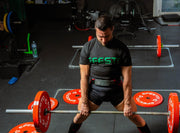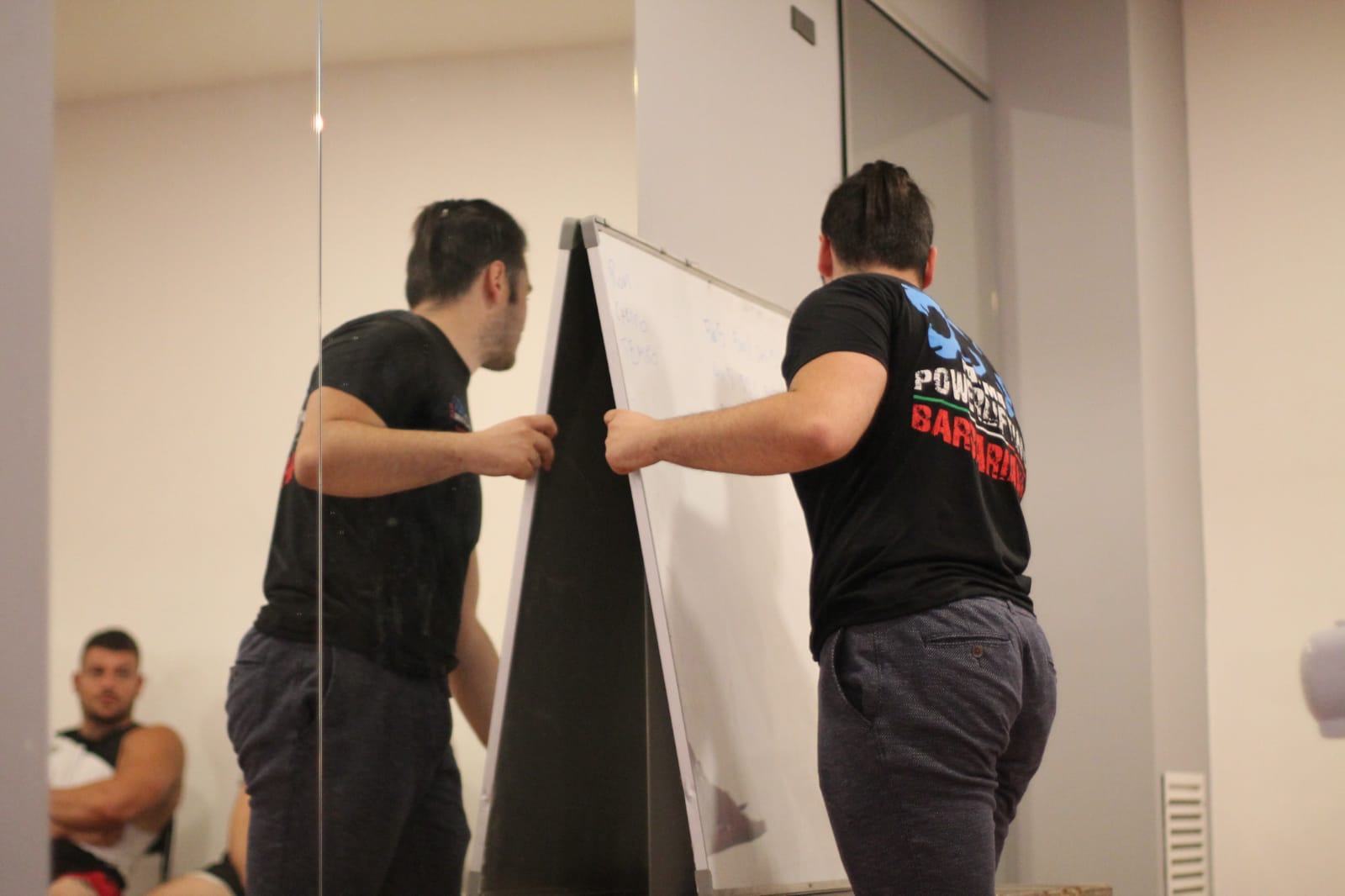
TECHNICAL CONSIDERATIONS ON THE RISE
When we talk about the deadlift, we often place it in an idyllic condition, without taking into consideration how much the game can actually change for those who, due to their anatomical characteristics, cannot find the right fit with this lift.
From what I have been able to verify in the field, for these subjects everything that works in theory does not work in practice, therefore it might be appropriate to approach the deadlift from the ground for those with unfavorable levers (generally, short arms and long torso), with a more malleable teaching .
Attention, With this I do not mean that those who are disadvantaged in the deadlift have the authorization to perform it without taking into account the fundamental principles that govern the lift, but that for a question of economy, this may be more subject to interpretation.
Let's take the regular deadlift as an example, a variant which for me is in most cases more efficient for a short distance.
Didactically on a normal lever or on a good lever, a good (essential) input is to approach the barbell with the lumbar slightly hyperextended and the dorsal relaxed by lowering onto the center of the foot until the hands reach the barbell. Well, normally this is an ideal condition from which the subject only needs to "stretch" and press down on the center of the foot. When the arms are short it doesn't work like this for the following reasons:
- The barbell attachment point requires you to bend your legs to a position where it is extremely difficult to maintain clarity due to the level of fatigue already present at the bottom
- Maintaining the lumbar and using exclusively the dorsal kyphosis to hook the barbell, on a subject who inevitably has to start with the torso more inclined to the floor, is almost impossible
So, in this case, the "all or nothing" rule applies: either we force ourselves to "hold our back" or we drop everything and try to focus on pressing to the ground.
Vittorio Simonelli with 175kg
Holding the lumbar , for short, in most cases results in creating parasitic stiffness all over your back and consequently preclude leg activation .
No shortie I know who tries to “hold their belly” has ever felt their foot push well against the floor.
In light of this, the advice I would like to give is to approach the barbell in a more closed way, essentially for two reasons:
- Going to pick up the barbell while already "hunchbacked" necessarily makes you arrive at it with a higher starting hip, and consequently a more favorable condition from which to push.
- Avoiding contraction of the back allows us to immediately create more connection with the floor.
I would like to specify that this approach is a palliative in case there is an extreme unfavorable condition, and that it is obvious that it will lead to other types of technical problems, first of all in closing: those who start with a hunchback tend to start very quickly from the ground up to the knee to then meet one sticking point extremely marked after it.
Always Vittorio with 195kg, more closed posture
HOW TO PROGRAM?
In case there is a similar situation, in my opinion, the concept is amplified of the squat which conditions the deadlift .
In recent times we have seen how the squat, being the primary driving force of the lower limb, limits the need to program the deadlift with particularly heavy or voluminous sessions, regardless of the lever.
So how can you manage deadlift programming assuming that the squat is well programmed?
Starting from the bottom is certainly the best way to get to the test in shape:
- Starting at low percentages allows you to create a positive feeling right away, without creating inhibitory/stiffness mechanisms that are very common in those who tend to approach the deadlift in a less than serene way.
- Starting at medium/high percentages makes you reach peak form too soon (a concept that is also valid, in my opinion, for good leverage)
Another factor to take into consideration is the possibility of remaining NON-SPECIFIC until the end of the program.
We tend to think (rightly) that the good feeling with the lift is created in an initial phase of programming, creating solid foundations to be carried into the intensification phase, where, then, the variations will be limited and the lift will be made as similar as possible to the racing gesture.
Now, however, two problems arise:
- The lift is specific to those with short levers it has a very short margin of time/good sensations
- The weekly frequency must necessarily be limited compared to those with good leverage.

So how could an intensification phase be managed in someone who can do a maximum of two deadlifts per week and not too heavy ones?
Personally I always use the variant as the main seat, i.e. the climbed in 4' seconds, basically with a single one.
This allows me to reach the load that I want the athlete to move well in that week with negligible work volumes and in a very short time, while the "slow climb" variant allows the weekly maintenance of the same (good) sensations.
- WEEK 1: Single up to 70% uphill 4' + back off 10% 3×3
- WEEK 2: Single up to 72.5% uphill 4' + back off 10% 3×3
- WEEK 3: Single up to 75% uphill 4' + back off 10% 3×3
- WEEK 4: Single up 77.5% uphill 4' + back off 10% 3×3
- WEEK 5: Single up to 80% ascent 4' + back off 12% 3×3
- SEPT 6: Single up to 82.5% uphill 4' + back off 12% 3×3
- SEPT 7: Single up 85% uphill 4' + back off 12% 3×3
- SEPT 8: Single 87% uphill 4' + back off 12% 3×3
- WEEK 9: Single 90% (TEST / RACE WEEK)
In a possible second session (not mandatory for me) , it might make sense to maintain a very light session of the opposite variant, in this case sumo, for example a 4x3 at 60% fixed.
I would like to underline again that such a light program, which aims purely at feeling the correct sensations rather than at muscle conditioning, would be COMPLETELY untraining in a poorly programmed squat context.

